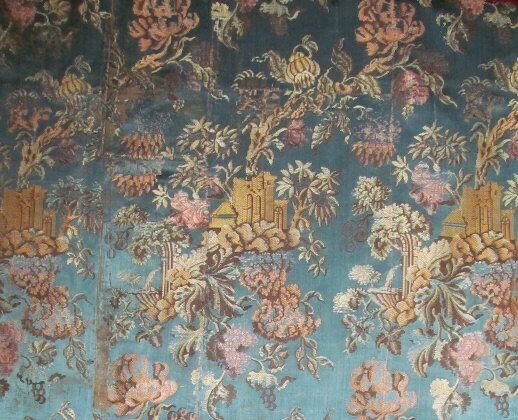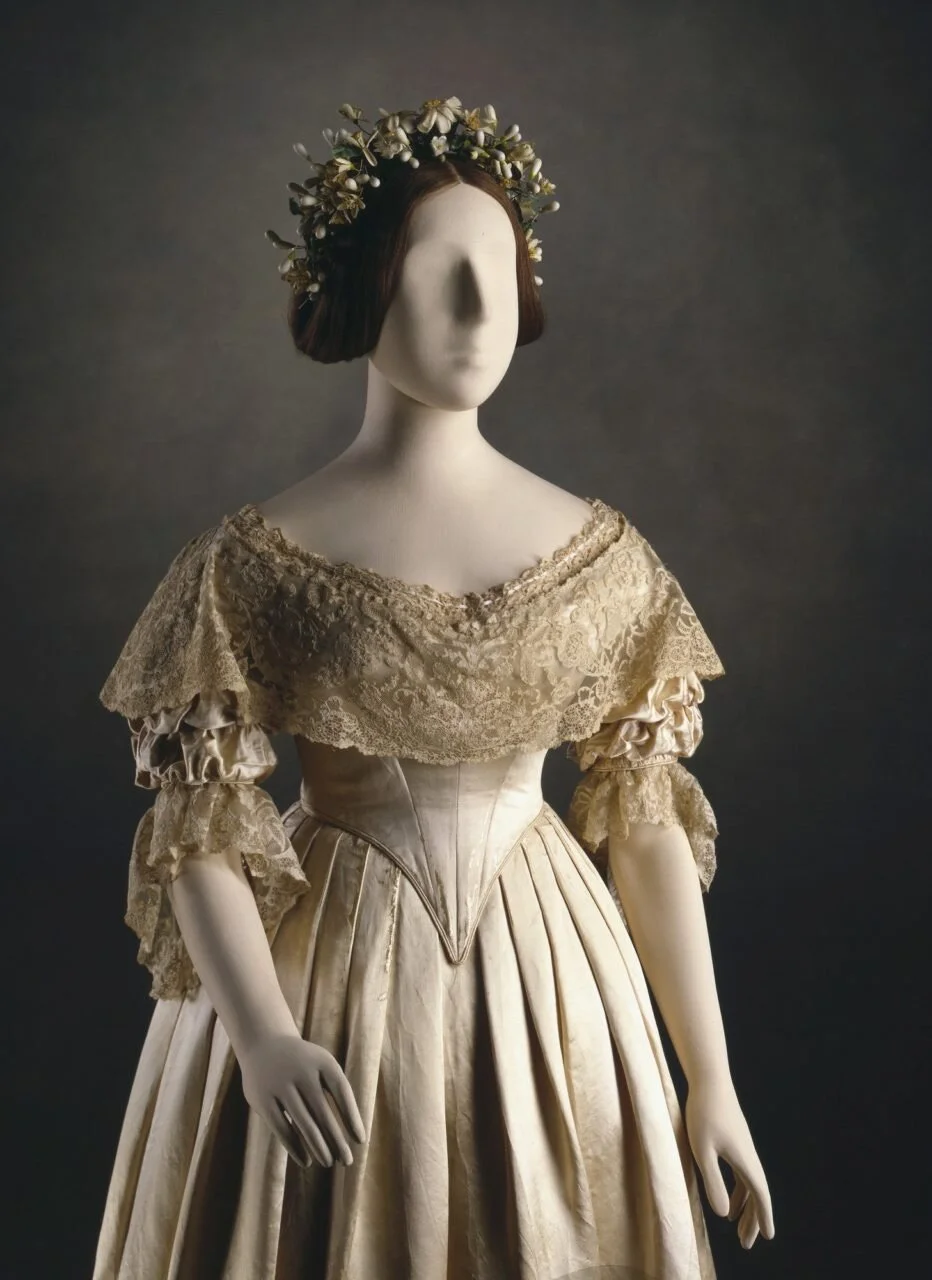Satin and Silk, Sultriness and Status: The History of Fashion’s Most Luxurious Fabrics
Satin and silk slip dresses, blouses, and scarves have officially achieved “staple status” in recent years. These pieces, by virtue of their timeless fabrics, exude effortless elegance, delicacy, and sophistication. The ability to dress these fabrics both up and down has fortified their relatively immortal influence on fashion trends. In the 90s, designers like Calvin Klein and Narciso Rodriguez popularized the “underwear-as-outerwear” trend, and as such, silk/satin wear became a tasteful play on risqué evening looks. Contemporarily, silk and satin pieces have transcended the domain of eveningwear and crept into the realm of casual wear. With their undoubtedly noticeable presence on every fashion blogger’s page, we beg the question, where did silk and satin originate from? What is their historical journey?
The Difference Between Silk and Satin
Not-too-surprisingly, there is a fundamental difference between silk and satin- each has its own respective and unique history. Although correlated, the two fabrics are of different quality, production, and feel.
Silk is known as one of the strongest fibers obtained from natural resources. Essentially, the larvae of certain insects produce cocoons which are then processed into this shiny and weightless wardrobe essential. When put in light, this fabric’s glossy texture attracts attention and breeds compliments, which is why it’s an ideal choice for extravagant events and formal occasions.
Satin, unlike silk, offers a lustrous texture on one side only. It’s produced from a weave with silk, nylon, and polyester fibers. The fibers used in satin are known as staple fibers- these short fibers differ from the long continuous ones found in silk. Since silk is the natural fiber of the two, satin is the more commercialized and affordable material, though one that offers a similar hypnotizing allure.
Silk and its Origins
According to an ancient urban legend, a teenage empress was drinking a cup of tea under a large white mulberry tree when a cocoon dropped from one of its branches and gracefully landed into her cup. Once the cocoon began to unwind, a soft string emerged, one which the empress used to weave the glistening fabric we call silk.
As poetic as that tale may be, historians have swiftly dismissed its accuracy. Instead, an alternative origin has been offered up: around 2570 BCE in China, a light-reflecting fiber produced from the native Bombyx mori moth was discovered. Its unique sparkle attracted China’s rulers and elites, ultimately establishing the newly discovered treasure as a fabric worthy of the utmost secrecy.
Despite only being accessible to nobles, Chinese women mastered the art of raising silkworms, cultivating white mulberry trees for their feedings, and producing the necessary cocoons. Intricate weaving patterns were also taught, learned, and refined. The new textile was often coated in images of dragons, lions, birds, and other natural elements; these designs were a direct representation of the owner’s status.
In the 1st century BCE, China began exporting raw and woven silk. However, contributing to its mystique, its origins were masked and remained little known. Elites yearned to learn more about the mysterious fabric from “the land of the silk.”
The Chinese lost supreme control over the production and distribution of silk in the middle of the 6th century, where the eastern Roman empire took it over. Byzantine weaver crafted bright-colored homegrown silks- also of which were solely available to the elites.
Throughout centuries, the popularity and presence of silk swept across all of Europe. Once reaching Italy, the production of silk took on a different form. Italians experimented with other methods of dyeing and fabric consistency, resulting in a diverse range of threads. One newly introduced design incorporated gold and silver detailing.
By the 18th and 19th centuries, designers responded to changing times and trends and crafted lighter silks in more gentle, floral prints. By the early 1800s, the industry took a labour-intensive turn. As such, the material became more widespread, and its accessibility increased.
Despite the industry’s being tainted by the introduction of synthetic fabrics, the versatility and elegance of silk remain very much alive today. It’s also undeniably difficult for other fabrics to outshine silk’s timeless beauty.
Satin and its Origins
Like silk, satin has been one of fashion’s most elegant fabrics, though it has not always been as accessible to all as today. Satin fabrics, too, originated in China- specifically a town called Zayton. It was only exported to Europe during the middle ages; however, it had moved to the West much earlier.
But how was satin made before the invention of manufactured fibres? Satin fibres were woven using large quantities of silk of fine cotton yarns. Unsurprisingly, this opulent fabric was only available to society’s most affluent and wealthy individuals. Its scarcity, luxury, and grandeur made it a material frequently reserved for members of the church.
Queen Victoria brought satin into the forefront of bridal fashion. During a ceremony to Prince Albert of Saxe-Coburg in 1840, she wore a white dress made of luxurious satin. This wedding dress style is similar to that which we commonly see today.
In the 20th century, satin was a popular fabric for undergarments. The 80s and 90s marked a time where the revitalization of punk and goth fashion brought underwear into the domain of casualwear. Madonna famously wore a pink satin corset by John Paul Gaultier in 1990 during her Blonde Ambition tour. This piece, which sold at an auction for over 51,000 dollars, has had a lasting influence on the corset and lingerie design.
Silk and Satin Today
Although once a symbol of prestige or, later, sultriness, silk and satin fabrics are now an everyday staple for all closets. Whether one is going to a bridal shower or a Sunday brunch, silk, and satin blouses and slip dresses seem to be more-than-appropriate attire.
So, where does all of this information leave you?
We have found an excellent website that has listed the 24 most simple, chic, and elegant slip dresses that are also...ethically made! These pieces are not only beautiful and incredibly versatile, but each brand is also sustainable. Check it out here: https://goodonyou.eco/sustainable-slip-dresses/
https://www.harpersbazaar.com/uk/fashion/g34324281/slip-dress/
https://www.polaroidfotobar.com/difference-between-silk-and-satin/
https://www.veranda.com/home-decorators/a27105022/the-history-of-silk/
https://www.calicolaine.co.uk/news/satin-fabrics-a-brief-history/
https://www.vogue.com/vogueworld/article/ultimate-slip-dress-guide-for-every-occasion




